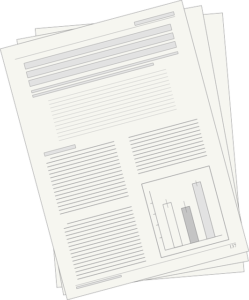A shorter and more concentrated post, of medium length and more balanced or longer and more dispersed ? The length of blog articles has always created debate in the world of blogging. And no less, it can be the difference between taking the top positions of Google or being relegated to the inner pages of search engine.
blog entry length
When I talk about bloggers and their blogs, almost everyone would like more readers, more comments, more links and more traffic, right? If you’re in the process of building your online audience, it’s essential that you learn how to write perfect entries on your blog. Anyway, even when you’ve been blogging for a while, it’s hard to figure out what your audience really wants and looks for, especially in terms of the length of your articles.
Many “expert” perpetuate the myth that “the shorter, the better,” that blog entries should be no more than 600 words. This mindset is supported by the fact that online readers have low attention spans and don’t want to read long articles. Not a chance.
blog post length
I myself have spent time researching, trying to find and shed some light to answer this question. In the early years of blogging, I paid attention to the myth of not exceeding a certain number of words. However, after several years of learning about what makes people read, I’ve realized that it’s just the opposite: the longer, the better.
In fact, some of my most read Online Marketing blog entries are more than 2,000 words long. After much analysis, I have found a number of keys that any blogger should consider when deciding the length or number of words in their blog articles.
Keys to decide the length of a post
Knowing the sector in which it is published
When creating content, it is critical to know your situation and that of your competitors. It’s not the same to start publishing in a relatively new sector as it is to start blogging in a heavyweight sector. There are advantages and disadvantages to both.
Example: In a sector with a lot of competition you can get to know what works and what doesn’t, which is a newer one would not be so easy.
Apply a tone to the content
Many bloggers never stop to think about setting a unique and characteristic tone to their blogs. However, if you really want to monetize your blog, you’re going to have to pay attention to this point. The tone affects the length of your blog posts, since they determine, apart from what you talk about with your audience (readers), how to do it.
Adjust a publication frequency
The most accepted rule by the sector is that the more frequently you publish, the shorter your articles should be and vice versa. It is true that there are many people who, due to their limited time, do not have time to read posts every day, so, if you publish every day, the short entries may come to make sense. In fact, this form of publication tends to accumulate more link juice, as you are constantly adding new content.
Anyway, that doesn’t mean you can make a 180-degree turn and follow your own rules. In these times, although many try to kill blogs (some have been doing so for years), blogs become appreciated by users, as they provide high value. It is true that this value can differ from one user to another, but after all, it does not stop approaching the positive (this is the reason for how complicated it is to create a popular blog).
Example: It is difficult to know each of the needs of each of your readers but, by keeping some things consistent (such as the frequency of publication and tone), you can (over time) begin to make some guesses.
Have a publication schedule
Users, whether they are your readers or not, like consistency. If you’re going to publish 3 times a week, let them know. Why do I mix the publication schedule with the ideal length of a blog entry?
Very easy, because desktop publishing can be improved.
Writing is 10% inspiration and 90% transpiration, suggesting that a good writer starts with a quick burst of creativity and spends the rest of the time refining and editing those initial ideas.
Never forget web positioning (SEO)
If you want to get a good positioning of your blog articles, then you should write and publish articles of more than 400 words. Google rewards articles of longer length because it considers them to be more worked and provide more value than a shorter article and therefore assigns them a higher score when it comes to indexing them.
The reason is simple, in longer entries is much easier to develop and explain your ideas, which will allow your community to be more faithful, and integrate the keywords in a more natural way to avoid penalties by search engines like Google.
Adapt a publication format
The format of an article has an enormous impact on its legibility. WordPress, for example, allows you to choose the format of the entry, which is nothing more than cataloguing the entries by the type of information they contain. Some of the most typical are gallery, for an entry that contains a gallery of images, video, for an entry that contains one or more videos or audio, which is an audio file or a playlist.
Having a clear goal
Every good content marketing plan has a purpose. Many purposes actually. The ultimate goal is conversion, but within this broad goal, there are usually many smaller goals. Other goals may be to improve brand awareness, boost social engagement, increase email lists or subscribers, provide training or educate and improve web positioning. For different purposes, naturally, different content length.
Example: If we want to raise awareness about a new product, it is better to use posts of 300 words, which aim to inform about the release of that new product to the market. When it is already on sale, it will be time to move to entries of more than 500 words, explaining the advantages of the product.
Be clear about who your audience is
A big part of content creation is getting to know your audience: their needs, their interests, their passions and their problems. Your goal is to create content that your audience will read, share and consume.
Example: In some cases having different audiences can mean using a different number of words. However, if your audience asks for posts of more than 1,000 words, that’s exactly what you have to give them.
Diversify the means to expose content
Content does not always mean words. There are so many types of content that you can enrich your texts and even replace them. Videos, infographics, images, memes and a long etc that will make the number of words can become the least.
Example: When I publish an infographics, for example, I usually use about 100 words to introduce the topic. The rest of the words are in the infographics, although this is not translated into word as we understand them. If I publish a video or a meme, the total of words is irrelevant, since it has another objective.
Know the ideal length by location

Although it will always depend on the above, I dare to decipher some numbers for the more adventurous, especially in the online marketing sector.
Ideal length of a headline
How much of the headline of this post did you read before clicking? In my experience, you probably haven’t read it all. When we scan the content, we don’t just look at the body of the text, we also look at the headlines. As such, we tend to absorb few words (the first three words and the last three words of a headline). If you want to get the most out of your headlines and make them more likely to be read, use 6-word headlines.
Note: Six-word headlines are rare to see (and difficult to write). If you can’t compress your title to 6 words, you might try to anticipate how it will be read, and adjust it accordingly.
Ideal body length of a post
In this sense, an ideal blog post would be one that people read and comment on, in its entirety. A study conducted by Medium found that an ideal post would have an average reading of 7 minutes or 1,600 words. To reach this number, Medium measured the average of the total seconds consumed in each post and compared it with the length of the content.
Note: The 1,600 words would respect each one of the points that I have explained to you in the article
Ideal paragraph length
The width of the content can give the appearance of simplicity or complexity and is key to maximizing comprehension to the reader. The ideal paragraph length, in this sense, would be to make it easier for the reader to read. The problem is that, to ensure maximum comprehension and the appearance of simplicity, the ideal line length ranges from 40 to 55 characters per line, or in other words, a column of content ranging from 250-350 pixels wide (depending on font size and choice).
Note: You may have noticed many web pages that have different fonts for the initial paragraph and for the rest of the text. Do you think this is by chance? Keep in mind that shorter lines are more easily read by the reader. They make it easier to focus and jump quickly from one line to the next

